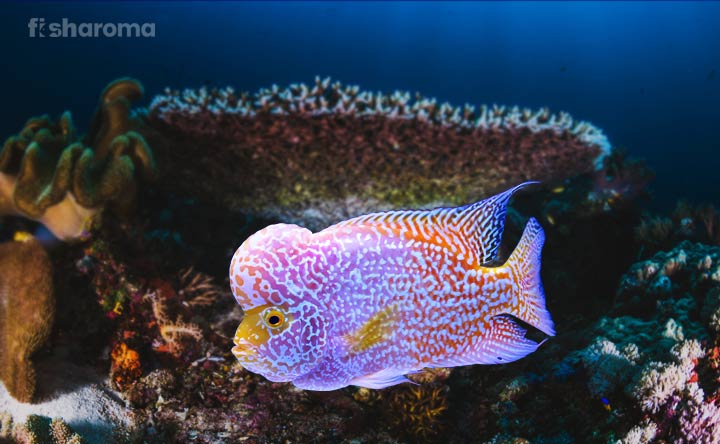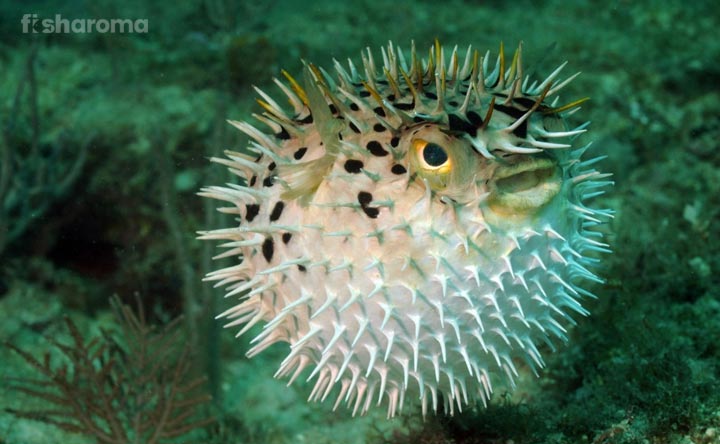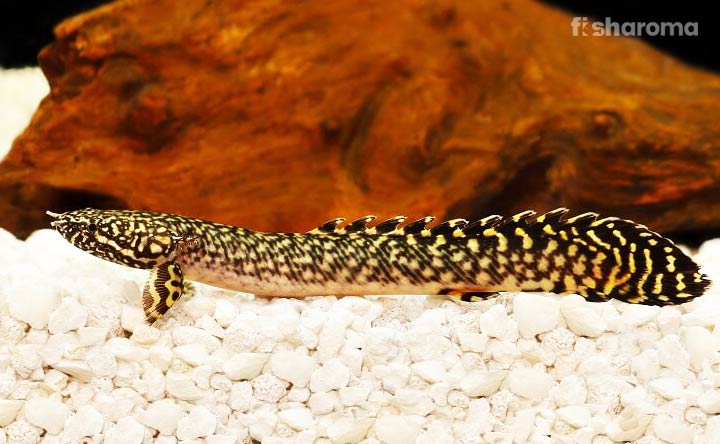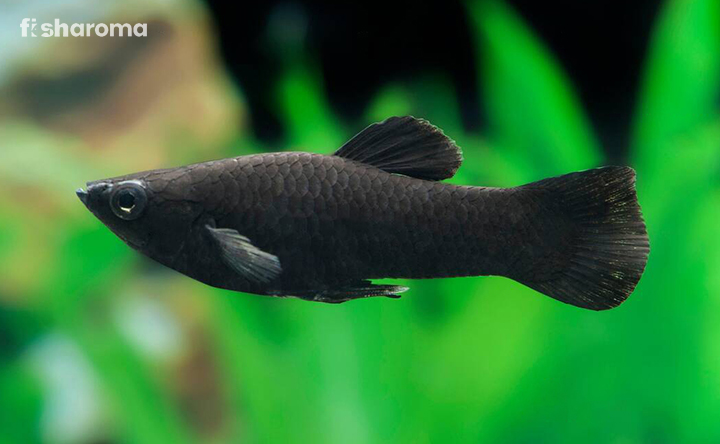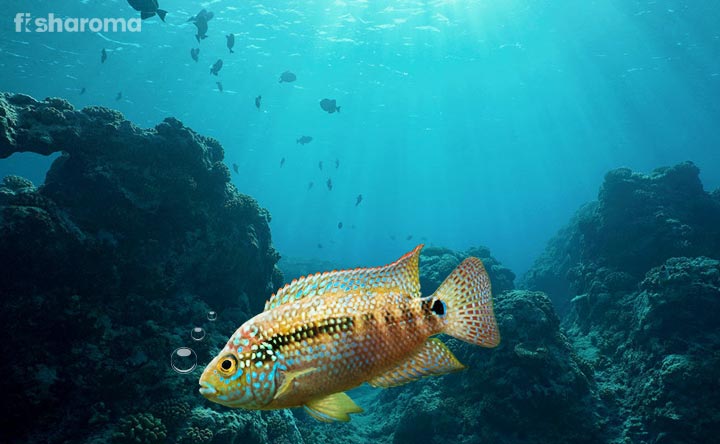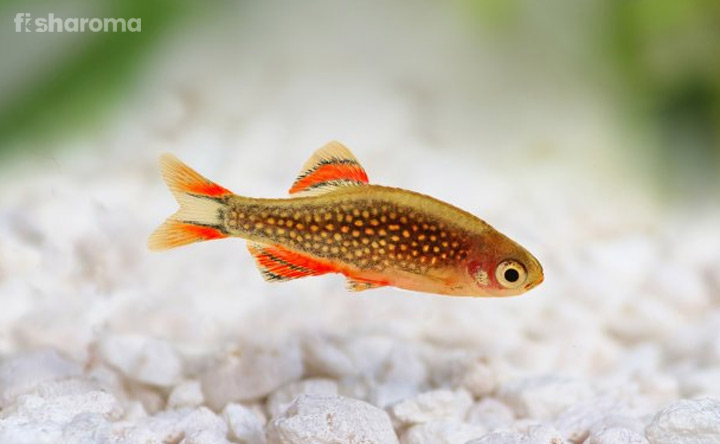Rosy Red Minnow: A Prerequisite Care Guide For The Feeder Fish
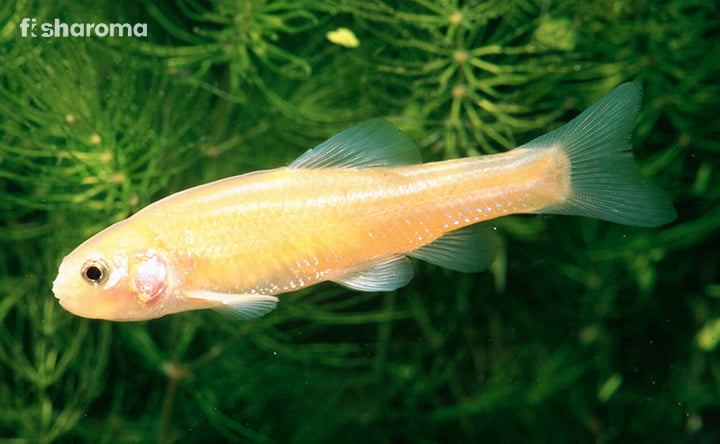
- Origin & Habitat of Rosy Red Minnow
- Appearance of Rosy Red Minnow
- Behaviour of Rosy Red Minnow
- Lifespan of Rosy Red Minnow
- Diet of Rosy Red Minnow
- Tank Requirements of Rosy Red Minnow
- Water Type for Rosy Red Minnow
- Compatibility of Rosy Red Minnow
- Breeding of Rosy Red Minnow
- Diseases of Rosy Red Minnow
- Summary
The Rosy Red Minnow is a feeder or bait fish, used as live prey for other carnivorous captive-bred fishes. They are basically a colour variation or rather a mutation of Fathead Minnow, belonging to the Cyprinidae family. But, owing to their undemanding and quick adaptable nature, aquarists are taking a great interest in fostering them as individual pet species.
Undoubtedly, the trait of petting them has been rewarding as the vibrant fishes elegantly grace your aquarium with its school. If you are thinking of getting the species, then you can always count on us for the necessary guidelines, in terms of its maintenance. Join us in this journey as we discuss what it takes to be a guardian of the fish, for its caring tips.
Key Specifications of Rosy Red Minnow
Here we have given all sorts of information that goes into caring for the fish. Proceed with the table for a piece of quick knowledge and gradually choose the sections for any specific advice.
| Other Names | Red Top Minnow, Tuffies (plural), Blackhead Minnow, Fathead Minnow, and Rosies |
| Origin | North America |
| Lifespan | 1-4 years |
| Colours | Red, pink, golden, or orange |
| Temperament | Peaceful |
| Size | 2-4 inches |
| Diet | Omnivorous |
| Reproduction | Egg-laying |
| Maintenance Requirements | Low |
| Tank Size | Around 10 gallons |
Overview
The North American tiny species is grabbing the eyeballs in the pet trade world, and all, too, for the right reasons. They are small, colourful, and don’t have such high-end requirements for food and tank set-up. Whatever you need to do is basic for any other fishes. Blessed with a huge tolerance power, the Rosy Red Minnows are super easy to breed as well. So, what is there not to like about them?
However, their lifespan is not that great either, that in turn, calls for a short term commitment, but their profuse breeding will replenish the species in no time. Let’s see how easy it is to take care of these “Rosies”.
Origin and Habitat of Rosy Red Minnow
In the wild, these fishes are widely distributed in Mexico (Chihuahua), Canada(Great Slave Lake), and America (Louisiana).
The Rosy Red Minnow is a tropical freshwater species, commonly found in ponds, swamps, and any water bodies with literally any conditions. That’s right! The hardy species can exist anywhere in the world.
Appearance of Rosy Red Minnow
The general Flathead Minnow has an olive green body with dark coloured patterns. Since these Rosy Red Minnows are a colour-specific mutation, as we have already mentioned in the introduction, they showcase monochromatic shades. Sexual dimorphism is present in terms of both aspects of size and colours.
The fish has a torpedo-shaped body adorned with translucent fins, with 8 rays on each pelvic and the thin dorsal fin. These fishes have 7 rays on their slim anal fins while the pectoral fin has around 15 rays. Like most fishes, this minnow has caudal fins that are forked. There is one lateral line present in the body which has around 45 scales, (the number may differ slightly). They possess a blunt snout along with round eyes.
Size
Male Rosy Red Minnows are slightly larger than their female counterparts. While a male fish usually grows between 2-4 inches, female Rosy Red Minnows are generally 1-3 inches. Female Minnows have smaller heads than male fishes.
You should always keep in mind that, breeders might have seen some exceptional cases in terms of the fish size, but they are rare, nothing out of the place has ever been recorded in this aspect.
Colour
Despite their name being “Red”, they don’t exhibit that particular shade at all. Their body is either pink, golden, or even orange, but never red. The upper half of their body is lighter than the lower part of their body, in terms of shade and not weight. Male fishes have golden or white marks or bars on the back portion of the head and on the dorsal fins. However, that feature is not present in female fishes. As per as the brightness is concerned, the female fishes are more robust than the male ones.
Behaviour of Rosy Red Minnow
Rosy Red Minnows have the mildest of temperament with a social, rather schooling proclivity. They love to stay with their own type and don’t prefer to come out of the group alone. By group we mean, minimum of 4-6 fishes together will be good enough for the tiny swimmers. Roaming around the entire tank, quenching their curiosity by searching close to the surface of the tank together is a common sight to behold. These fishes either swim through the middle part of the water, or they find themselves at the bottom, but they don’t come to the upper level.
As mentioned in the beginning, their tolerance power has always been the talk of the town. They can withstand the water temperature fluctuation, as well as the change in the acidic content of the water. They can thrive in mud-filled water with thick layers of soils and limited oxygen supply without any problem.
In their natural territory, these fishes use a defensive chemical signal to alert other fishes regarding any hazard or danger through their epidermal cell. If one individual fish is assaulted by any larger predator, then it will release a chemical, that is also known as “Schreckstoff”. This will make other nearby fishes cautious and alarmed about the predators and they quickly escape from the area. On the other hand, the predators might go away if they consume the chemical, misinterpreting it as a potential threat for them.
Lifespan of Rosy Red Minnow
A Rosy Red Minnow can live for around 4 years if they are well taken care of. Ironically the otherwise hardy fishes live a lot less (like for 2 years) if they breed extensively because their body can’t take the pressure of spawning and other breeding procedures for a long time.
Diet of Rosy Red Minnow
The Minnows are actually omnivores in nature, easily consuming plants, algae, and crustaceans. If you keep them inside a tank, they act as wonderful tank cleaners. Keeping this in mind, you should provide a balanced diet including the best from both worlds (i.e vegetables and meat). Regardless of the items, you should always feed the fishes twice daily, and no exception should be made in this case, unless any medical contingency arrives.
You can always rely on green vegetables to a great extent, and that should be the major part of their diet. Here are some overall food ideas that you must adhere to,
- Blanched vegetables like zucchini, cucumber, and shelled peas
- Daphnia
- Insect Larvae
- Bloodworms
- Tubifex
- Brine Shrimps
- Zooplankton
- Goldfish Pellets and flakes
Never let any leftover food stay inside the tank, try to clean it within a day, or else it will pollute the water. That is somewhat against the ideal thriving condition of the fish.
Tank Requirements of Rosy Red Minnow
The hardy species doesn’t call for lavish tanks, as they are literally comfortable with anything possible. Since they don’t live for a long time, you need to give them proper food and tank related care so that their health is not compromised. This is because a captive-bred fish can outlive its natural lifespan if it is well taken care of.
Tank Size
The fishes are schooling species, meaning they can’t stay alone, so even in a homely set-up, you need to keep a few fishes together. The tiny fish can do well in a 5-gallon tank, but for 5-6 fishes, a 10-gallon tank is standard. Bigger the tank, better for the fish, but less than that size is not recommended.
These fishes can stay inside a tank with a diameter of 20X10X12 inches. They can comfortably thrive inside a pond as well. Many breeders arrange an outside pond for these hassle-free fishes.
Tank Lid
These fishes don’t require any specific kind of tank lid, just the usual one, in accord with the tank will do good. The fishes need to stay clean and no external objects or insects can disturb them, so for that, a lid should be placed.
Substrate
The fun part is that a Rosy Red Minnow has no fuss regarding any particular type of substrate. They are okay with both the soft sandy surface and gravel-based ones. They can always adapt to the existing substrate. But if you keep these fishes with other species, then design the substrate according to them, as your Minnows are pretty adjusting!
Filter
There is generally no excessive amount of bioload found inside a Rosy Red Minnow-specific tank. So, any standard filter would be a good option. But our recommendation is that you choose a Sponge Filter, as it has multilayered advantages. First, the good aeration, and then these filters are comparatively safer than other filters as newborn fishes or “Fry” don’t get sucked up by these Sponge Filters.
If you have the Hang on Back Filter, then that can also be used. Just make sure that there is no strong current that can possibly harm the younger fishes.
Whatever filter you use, always close any open hole so that it can’t be drawing the “Fry” towards it. You can close the hole if it is required.
Ornaments
The Rosy Red Minnows need their space for swimming, so use decorative items but make sure the fishes are not compromising with their space. These fishes love caves at some point of time. You can keep some rocks here and there so that they can explore the surface. Again, not a mandate, but their mental wellbeing should be your priority too!
Keep some driftwoods along with the caves so that the fishes can take a tour with their group members.
Lighting
The fish is not demanding regarding lighting either, but still, for the safe side, you can place subdued lights externally on the sides of the tank.
Presence of Flora
You can keep both floated and anchored plants on the surface of the tank as they will enjoy swimming around them. Our suggestions include
Cleaning Method
The tank should be cleaned and so do the ornaments inside. You should clean them whenever you feel like they are getting polluted and the water is getting dirty.
Water Type for Rosy Red Minnow
Let’s get the fact straight that there is no particular type of water for Rosy Red Minnow. They can thrive anywhere, but cooler water is recommended from our end.
Temperature
Rosy Red Minnows can withstand a wide range of temperatures from 0 – 37 Degrees Celsius.
pH Level
The adaptable species can do well in water with a pH level of 6-8. However, they are comfortable when the pH level is 7 as well.
Hardness
Rosy Red Minnow can adjust in slightly soft water as well as extremely strong water.
Replacement Procedure
The Rosy Red Minnow doesn’t have any specific requirements for the cleanliness of the water, because of its commendable capacity to withstand any sort of water type. Still, you should not let these small fishes to be in dirty water.
It is a natural process that the water will be polluted either from the leftover food or from the waste of any other fishes staying inside the same community tank. So, change the water on a frequent basis, at least when the water seems to be getting dirty. It could be weekly or biweekly, but keep your eyes open and change the water.
Compatibility of Rosy Red Minnow
The fishes gel with many other fishes, but if other fishes find them suitable or not that is the question. As mentioned, Rosy Red Minnows are schooling fishes, meaning they always stay with their groups. So, with or without any other fish species, you should always keep multiple Rosy Red Minnows together. It could be a minimum of 4 and a maximum of 10. (Depending on the size of your tank, you can increase the number of the fishes, of course!)
Suitable Tankmates
Apart from their own kind, any fishes, preferably smaller ones who mostly swim in the lower zone of the water should be placed with the Minnows. This is because, these Rosy Red Minnows mostly swim in the middle zone of the water, and any fishes swimming in the same zone might obstruct each other’s way. Fishes who prefer a somewhat cooler temperature should be these Minnows’ neighbours because your Minnows stay most comfortable around that temperature.
Smaller invertebrates and crustaceans are good tank mates. The ideal mates for these Rosy Red Minnows are given in the following
- Bristlenose Pleco
- White Cloud Minnow
- Dojo Loach
- Hillstream Loach
- Red Shiner
- Cherry Shrimp
- Amano Shrimp
- Ghost Shrimp
- Mystery Snail
Unsuitable Tankmates
Any predator or larger fish that will feast on these beautiful Minnows should be avoided at all costs. Aggressive fishes are off the chart as well.
The fact, that many people believe in, Goldfishes will be compatible tankmates for these Minnows is partially true and there is a lot of chance factor involved. Because many variations of Fancy Goldfishes can consume these fishes as the former has a growing appetite.
Breeding of Rosy Red Minnow
The fish reaches an ideal age for breeding when they are around at least 1 year of age. Although they can start breeding as early as 6 months old.
The males exhibit some tubercles and fatty tissues on their heads (earning the name Fathead!), which can show that they are ready for the upcoming breeding ritual. Territorial behaviour and aggression specific to this phase are observed in males.
If you see such things you may need to set an ideal temperature range from 0-32 Degrees Celsius. Although in the wild, they breed mostly when the temperature is 10-25 Degrees Celsius. It is mostly around May to September that they prefer to breed in their natural setting, but while in captivity, they show no particular preference regarding any breeding time.
Male fishes can capture a cave or any specific hiding shelter at the tank. With their tubercles part, they will make the surface clean. During this phase, other potential male opponents might try to fight to claim the territory. The fight is never fatal, nor does it result in any sort of injury, but there is always a winner who courts the female subsequently.
The courting dance is amusing like they stick to each other and then vibrate their body in a synchronized way. The female then lays around 400 eggs inside the claimed territory of the male. The male fishes drive the females away and start to guard the eggs until they are well-hatched and that takes around 4-5 days.
When the young fishes or “Fry” appear, the male fishes lose their protective instinct and they separate their ways. But in captivity, you can keep them together, while feeding your new ones with infusoria.
Diseases of Rosy Red Minnow
The Rosy Red Minnows can become sick from the below-mentioned diseases,
Popeye is something when the affected fish gets some built-up fluids around the eyes and as a result, the eyes look popped out of its socket.
Many fishes can get backbone or spine deformities either by genetic problems or by Vitamin C deficiency.
There might be scale shedding issues that are due to some infections. Parasitic diseases can be a problem, and you can prevent them all by cleaning the tank, maintaining the water conditions all in your best effort.
As far as the treatment is concerned, consultation with a professional aquatic veterinarian is always recommended.
Summary
Despite being used as a feeder fish for other carnivorous and omnivorous fishes, the Rosy Red Minnows are coming out on their own charisma and magnificence. The hardy fish doesn’t care for special attention, rather they are one of the most fuss-free creatures, to begin with. Both beginner and pro-aquarists will be able to handle them. While other Minnows from their family don’t care for their young, Rosy Red Minnows always show their unique parental care, but that is exclusive to their male specimens only.
Interesting Facts
- One of the sobriquets “Tuffies” of Rosy Red Minnow has come from the fact that they are tough and enduring in the wild.
- The term “Schreckstoff” has been given by a famous ethologist Karl Von Frisch in 1936. The word means a “substance that can scare others”. It has been proven only after a prolonged phase of observation by the ethologist.
Other Similar Care Guides
Here are a few suggestions from our end, regarding fish and other crustaceans care guides that might be good for you.
- Ramshorn Snail – With around 3 years of lifespan, the beautiful snail slowly crawls through the surface and enhances the tank’s beauty. The omnivorous snail has a gentle nature.
- Yoyo Loach – The black and white loach belongs to the Botiidae family. It is native to Asian countries like India, Pakistan, and Nepal.
- Platy Fish – The tiny fish does excellently well with other similar fishes inside. You will love to see how these peaceful yet enthusiastic fishes are a must-have for fish lovers.



